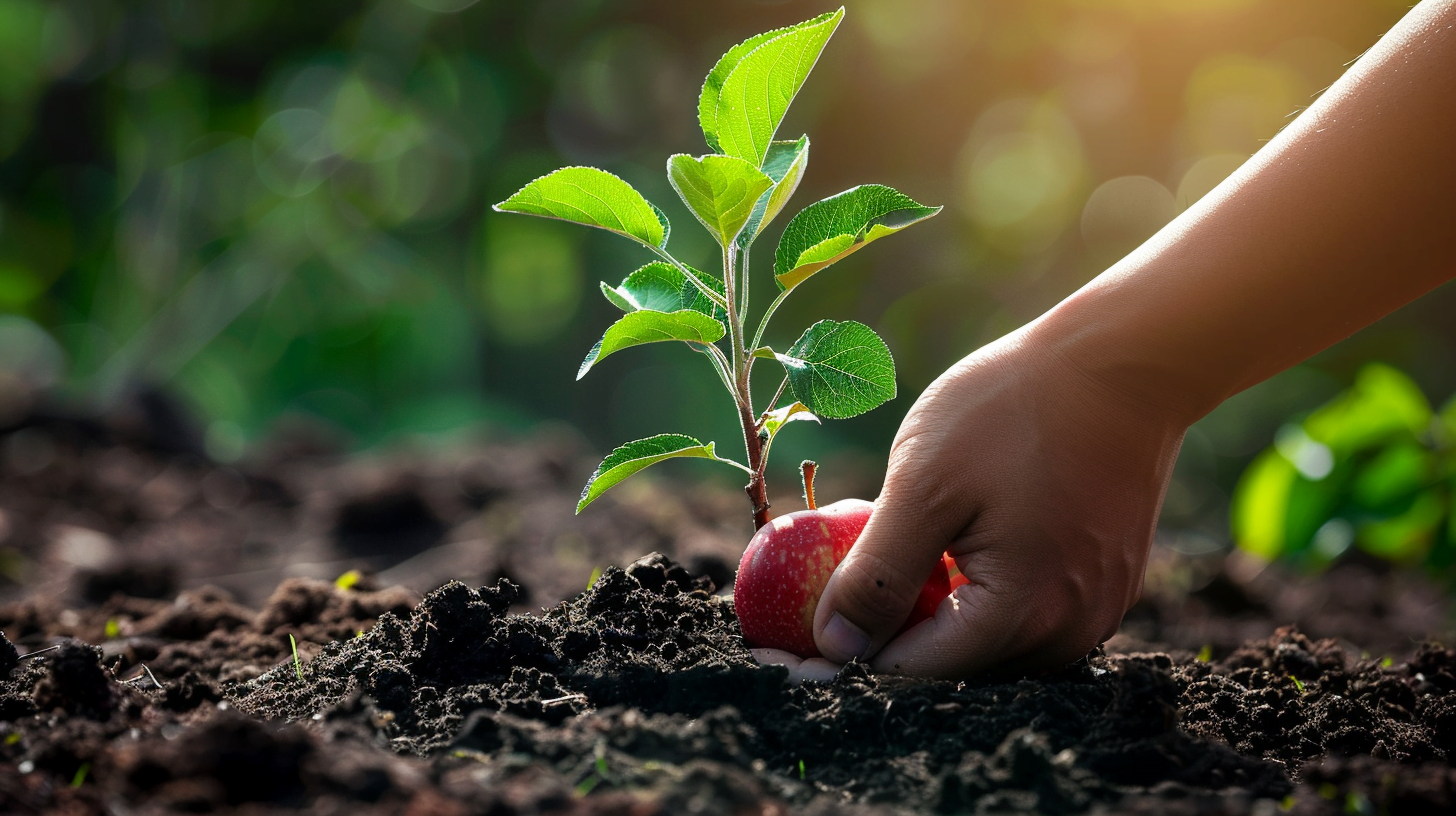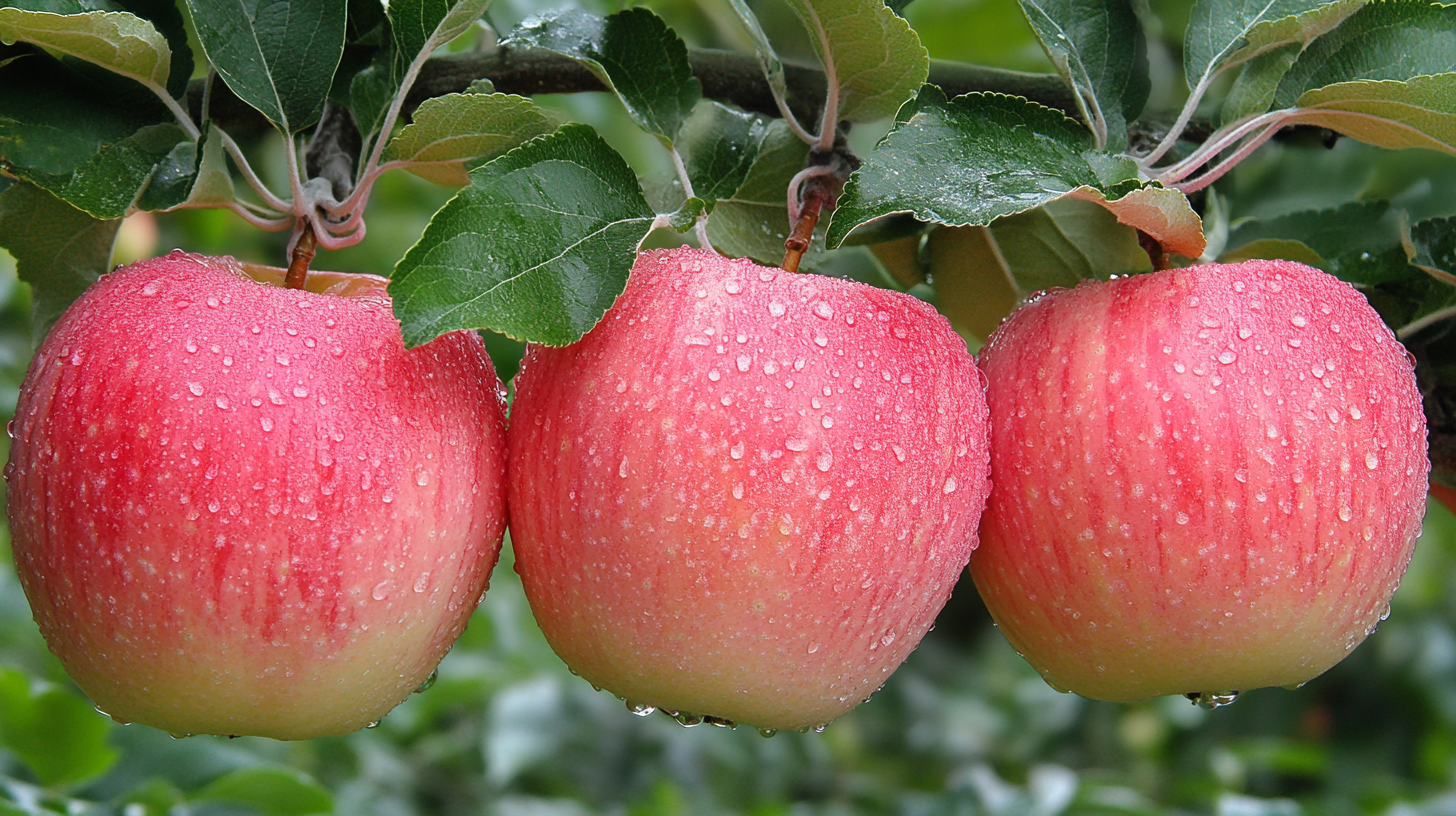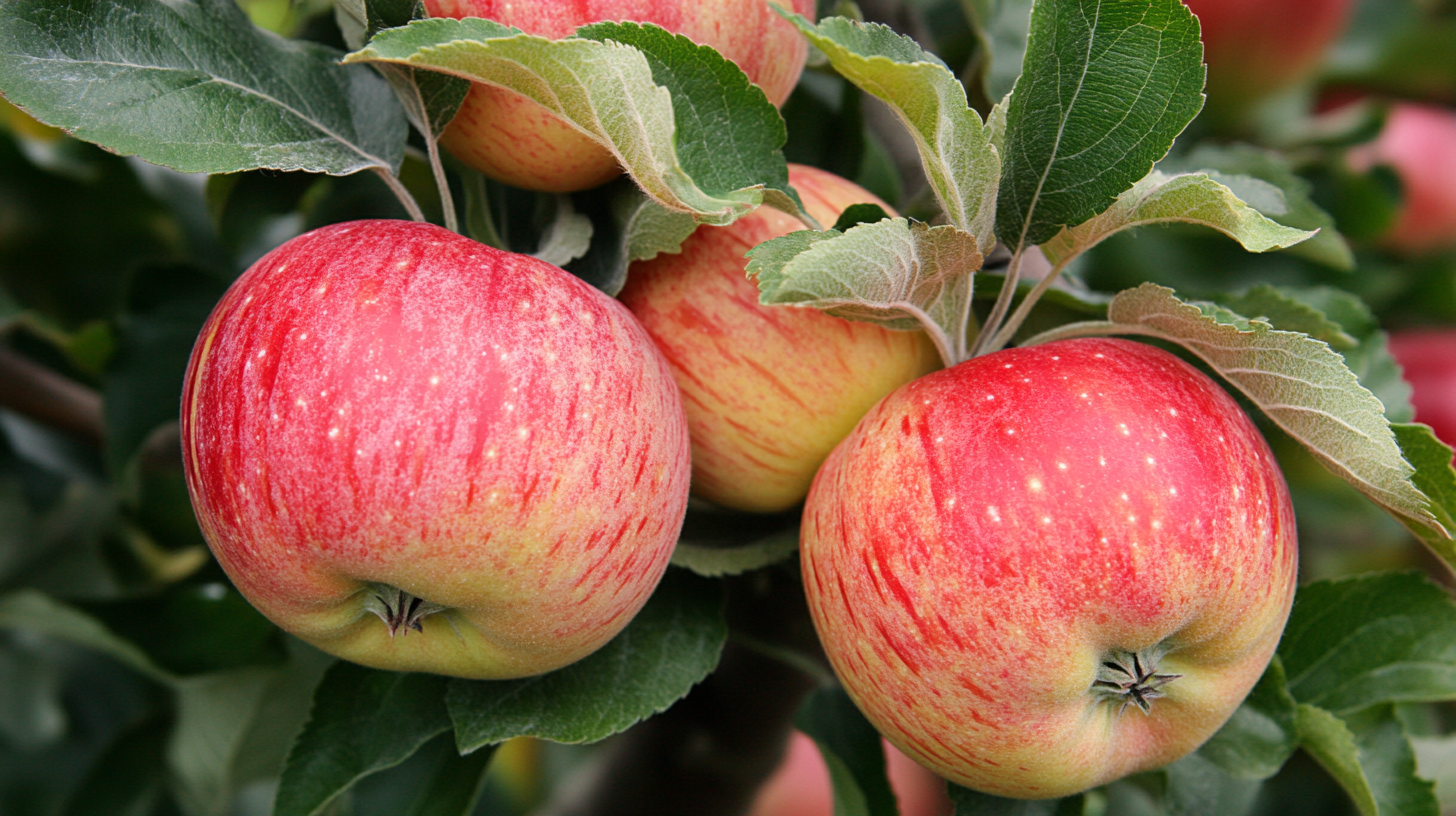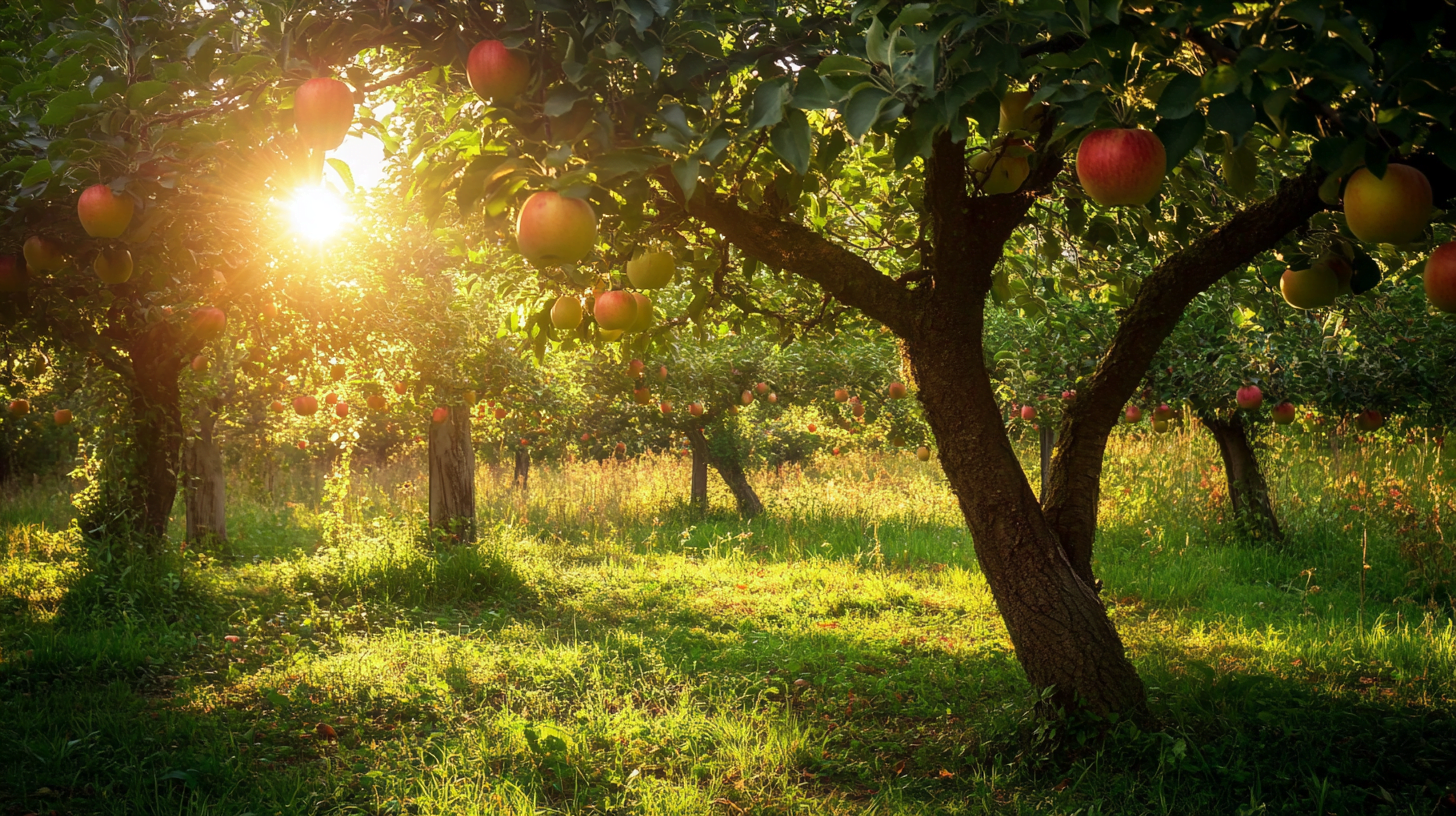Beautiful Plants For Your Interior

Table of Contents
Are you eager to sink your teeth into a crisp, juicy apple freshly picked from your own backyard? Growing apple trees can be a rewarding experience, but it requires patience and understanding of the fruiting process. In this comprehensive guide, we’ll explore the factors that influence how long it takes for an apple tree to bear fruit and provide you with tips to optimize your tree’s fruit production.
Factors Affecting Apple Tree Fruiting Time
Several key factors play a role in determining when your apple tree will begin producing fruit:
Age of the Tree
The age of your apple tree significantly impacts its fruiting timeline. Seedlings, or trees grown from seeds, can take anywhere from 6 to 10 years to bear fruit. However, most apple trees sold in nurseries are grafted, which means the desired variety is attached to a rootstock. Grafted trees typically have a shorter juvenile phase and can bear fruit within 2 to 5 years, depending on the rootstock.
Apple Tree Variety
Different apple varieties have varying fruiting times. Some are known for their early-bearing tendencies, while others take longer to produce fruit. Here are a few examples:
| Early-Bearing Varieties | Late-Bearing Varieties |
|---|---|
| Gala | Arkansas Black |
| Golden Delicious | Granny Smith |
| Honeycrisp | Cripps Pink (Pink Lady) |
| Fuji | Braeburn |
Rootstock Type
The rootstock your apple tree is grafted onto plays a crucial role in its size and fruiting time. There are three main categories of rootstocks:
- Standard Rootstock: Trees on standard rootstock are full-sized, reaching heights of 20-30 feet. They have a longer juvenile phase and can take 6-10 years to bear fruit.
- Semi-Dwarf Rootstock: Semi-dwarf trees are smaller, typically reaching 12-15 feet in height. They have a shorter juvenile phase and can bear fruit within 3-5 years.
- Dwarf Rootstock: Dwarf apple trees are the smallest, usually staying under 10 feet tall. They have the shortest juvenile phase and can produce fruit within 2-3 years.
Climate and Growing Conditions
Apple trees thrive in regions with cool winters and moderate summers. Most varieties require a certain number of chill hours, or hours below 45°F (7°C), to break dormancy and produce flowers. Insufficient chill hours can delay or prevent fruiting.
In addition to temperature, apple trees need:
- Full sun exposure (at least 6 hours of direct sunlight per day)
- Well-draining soil with a pH between 6.0 and 7.0
- Adequate moisture and nutrients
Pruning and Training
Proper pruning and training techniques are essential for promoting healthy growth and fruit production. Annual pruning helps maintain the tree’s structure, allows sunlight to penetrate the canopy, and encourages the development of fruiting spurs.
Some key pruning tips include:
- Remove dead, diseased, or damaged branches
- Thin out crowded or crossing branches to improve air circulation
- Train branches to grow at wide angles for better fruit distribution
Pollination
Pollination is crucial for fruit development in apple trees. Most apple varieties are self-sterile, meaning they require cross-pollination from a compatible variety to produce fruit. Planting at least two different apple varieties that bloom at the same time can ensure proper pollination.
Pollinators, such as bees and other insects, play a vital role in transferring pollen between flowers. Encouraging pollinator activity by providing a diverse garden habitat can improve fruit set.
Average Time for Apple Trees to Bear Fruit
Now that we’ve explored the factors influencing fruiting time, let’s look at the average time it takes for apple trees to bear fruit based on their type:
Seedlings
Apple trees grown from seeds have a longer juvenile phase and can take 6 to 10 years to bear fruit. However, the fruit may not be true to the parent variety due to genetic variation. For this reason, most apple trees are propagated through grafting.
Grafted Trees
Grafted apple trees offer a more predictable fruiting timeline based on the rootstock type:
- Standard Rootstock: Trees on standard rootstock can take 6-10 years to bear fruit.
- Semi-Dwarf Rootstock: Semi-dwarf trees typically bear fruit within 3-5 years.
- Dwarf Rootstock: Dwarf apple trees have the shortest juvenile phase and can produce fruit within 2-3 years.
It’s important to note that some apple varieties are more precocious than others, meaning they bear fruit earlier. For example, ‘Gala’ and ‘Honeycrisp’ are known for their early-bearing tendencies, while ‘Granny Smith’ and ‘Arkansas Black’ may take longer to produce fruit.

Optimizing Fruit Production
To ensure your apple tree reaches its full fruiting potential, consider the following tips:
Planting Considerations
- Choose a sunny location with well-draining soil
- Plant trees at the proper spacing based on their rootstock (dwarf, semi-dwarf, or standard)
- Amend the soil with organic matter and ensure proper pH levels
Watering and Fertilization
- Water young trees regularly, especially during dry spells
- Apply a balanced fertilizer annually based on soil test results
- Avoid over-fertilizing, as it can lead to excessive vegetative growth at the expense of fruit production
Pest and Disease Management
- Monitor trees regularly for signs of pests or diseases
- Implement preventive measures, such as proper sanitation and pruning
- Use integrated pest management techniques, including biological controls and targeted sprays when necessary
Harvesting and Storage
- Harvest apples when they reach maturity, indicated by color, firmness, and taste
- Use proper picking techniques to avoid damaging the fruit or the tree
- Store apples in a cool, humid environment (32-40°F with 90-95% humidity) for long-term preservation
Troubleshooting Fruiting Issues
If your apple tree is not producing fruit as expected, consider the following potential issues and solutions:
| Issue | Solution |
|---|---|
| Insufficient chill hours | Choose varieties with lower chill requirements or provide artificial chilling |
| Lack of pollination | Plant compatible pollinizers and encourage pollinator activity |
| Nutrient deficiencies | Conduct soil tests and adjust fertilization accordingly |
| Pest and disease damage | Implement integrated pest management strategies and address issues promptly |
Conclusion
Understanding the factors that influence apple tree fruiting time is key to enjoying a bountiful harvest. By selecting the right variety, rootstock, and planting location, providing proper care, and troubleshooting issues promptly, you can optimize your tree’s fruit production.
Remember, growing apple trees is a journey that requires patience and dedication. Embrace the process, from the anticipation of the first blossoms to the satisfaction of biting into a homegrown apple. With time and care, your apple tree will reward you with delicious fruit for years to come.
FAQs
- How can I tell if my apple tree is ready to bear fruit?
Look for the development of fruiting spurs, which are short, stubby branches that produce flowers and fruit. Additionally, monitor the tree’s overall growth and maturity based on its age and rootstock. - Can I speed up the fruiting process of my apple tree?
While you can’t significantly accelerate the fruiting process, you can optimize growing conditions to support healthy tree development. Ensure proper sunlight, water, nutrients, and pruning to encourage fruit production. - What should I do if my apple tree is not producing fruit after several years?
First, assess the tree’s age and rootstock to determine if it has reached its expected fruiting timeline. If it has, consider factors such as pollination, chill hours, and nutrient availability. Consult with a local extension office or experienced orchardist for specific guidance. - How can I ensure my apple tree produces high-quality fruit?
To promote high-quality fruit, focus on providing optimal growing conditions, including proper pruning, irrigation, and fertilization. Thin out excess fruit to encourage larger, healthier apples. Monitor for pests and diseases, and address issues promptly. - What are some common mistakes to avoid when growing apple trees?
Common mistakes include planting trees too closely together, neglecting pruning and training, over-fertilizing, and not providing adequate water. Additionally, failing to monitor for pests and diseases can lead to significant issues. By staying attentive and proactive in your tree care, you can avoid these pitfalls.


